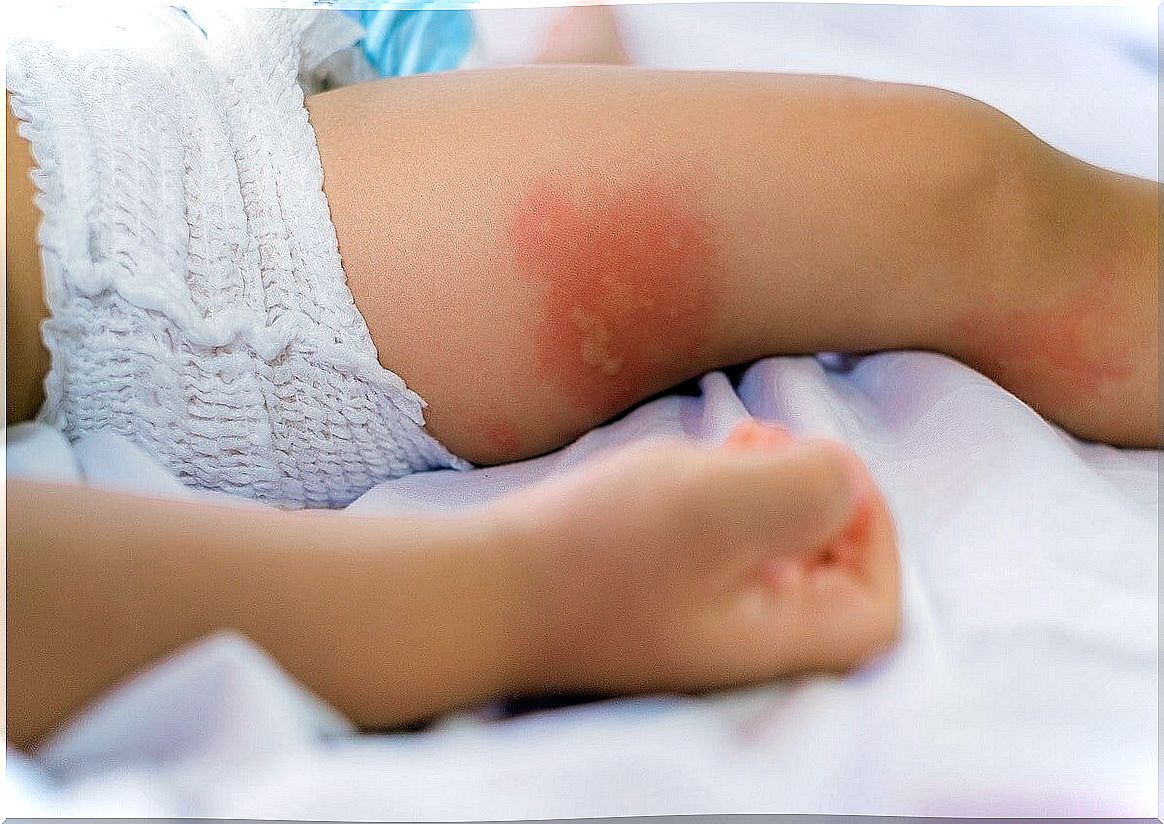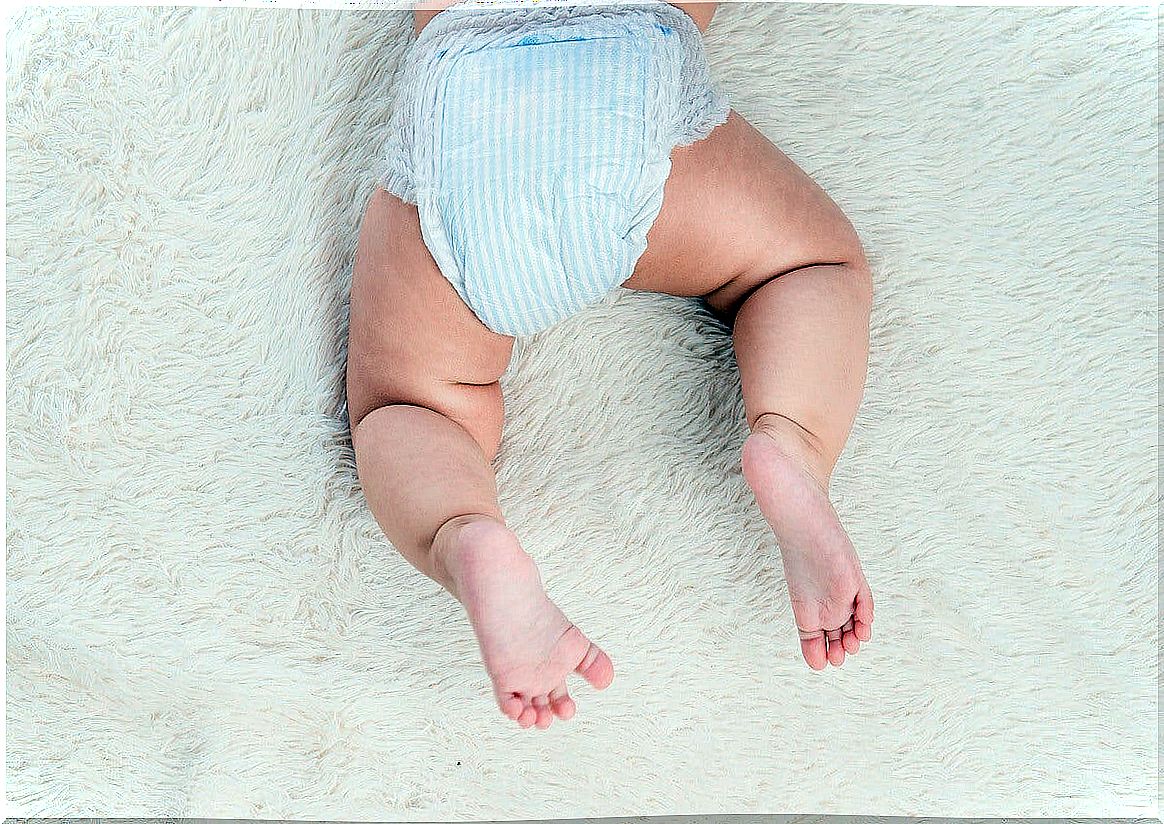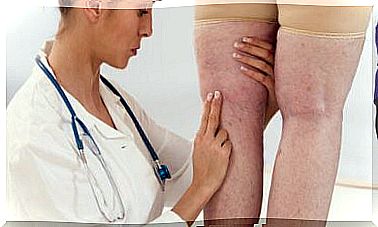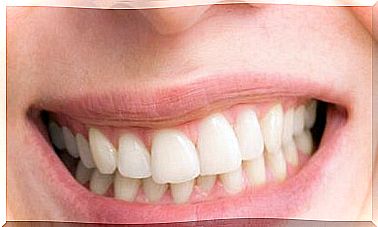Diaper Rash: Symptoms, Types And Treatment
Diaper rash is the most common skin disorder seen in young babies. In turn, it is usually a mild, self-limited condition that requires minimal intervention.
It is usually seen in the buttocks and genital area, but also in the lower abdomen and upper thighs due to contact with irritants.
According to information published in Pediatric Dermatology , this condition is associated with friction, overhydration of the skin, alterations in skin pH, among others. Also, it is most prevalent during the baby’s first year of life. What are your symptoms? How is it intervened?
Symptoms of diaper rash
Diaper rash is an inflammatory reaction of the skin around the diaper area. Babies have thinner skin, which produces less secretions and makes them more susceptible to infection or irritation. Even so, the factor that most affects this condition is the occlusion of the skin by the diaper.
Symptoms depend on the severity and time of evolution of the dermatitis. According to information compiled by the Spanish Society of Out- of-hospital Pediatrics and Primary Care, some of the clinical manifestations are as follows:
- Itching of varying intensity.
- Subtle redness in mild frames.
- Intense inflammation (there may even be bleeding in severe cases).
- The baby can alter his character by the significant irritation in the area of his diaper.

What are your causes?
Diaper rash is the result of a combination of multiple factors, such as increased humidity, prolonged contact with urine or feces, and other irritants such as detergents.
The second most common cause of diaper rash is infection. Specifically, fungal infection, especially Candida albicans , is the most common infectious cause. Similarly, other mycoses can be associated with diaper rash, such as:
- Dermatophytosis infection.
- Malassezia exacerbation of seborrheic dermatitis .
- Pseudomycotic conditions such as erythrasma.
Types of diaper rash
Diaper rash is any skin disease that occurs in the lined area of the diaper. In turn, this inflammation can be generated by various causes, which classifies them into different types according to their origin.
Irritant contact dermatitis
Irritant contact dermatitis is the most common type of diaper rash. Its appearance is related to skin contact with feces and urine that accumulate in the diaper. However, healthy inguinal folds are usually observed, without cutaneous alteration, because they have less contact with irritants.
To prevent this from happening, AEPED studies recommend proper hygiene of the area and that it always be kept clean and dry. Even, the ideal thing is to implement repeated diaper changes during the day.
Diaper candidiasis
Diaper candidiasis is a yeast infection that is generated by the overgrowth of a type of fungus that is normally found in the digestive microbiota. The signs that characterize it are the following:
- Very red spots.
- Shiny injured skin.
- Clearly delimited lesions.
- Sores
- Compromised inguinal folds.
Bacterial dermatitis
In rare cases, a bacterial dermatitis, also called impetigo, is observed. However, the staphylococcus and the streptococcus s They tend to cause a diaper rash or worsen an existing one. A characteristic sign of infection by streptococcus It is the bright red skin around the anus.
Allergic dermatitis
Babies with sensitive skin may develop some kind of allergic reaction to a particular component of diapers or creams. The most common allergens include the following:
- Elastics or dyes in the diaper.
- Perfumes
- Preservatives in hygiene products.
You may be interested: Types of dermatitis and their main characteristics
Is it possible to prevent diaper rash?
Treatment of diaper rash has two main goals: to heal damaged skin and to prevent recurrence of the rash. Here are some useful strategies to accomplish this goal.
- Good hygiene is essential to maintain the integrity of the skin and prevent further breakdown. Exposure to irritants, such as urine and feces, can be reduced with frequent diaper changes and with super absorbent diapers that help reduce overhydration of the skin.
- Bathe and clean the diaper area with soap-free cleanser and water.
- Pediatric Dermatology studies show that baby wipes do not cause any damage to the skin. In addition, the new formulations of this product, which include pH buffers , help balance the alkaline pH of the urine and prevent skin damage.

Treatment of diaper rash
Whatever the type of infection in the diaper area, it must be diagnosed and treated by the pediatrician or dermatologist. According to the type of skin lesions and their distribution, a correct diagnosis and therapeutic options will be established.
- In the case of irritant contact dermatitis, proper hygiene is recommended and staying outdoors for a few minutes. Then, the ideal is to place a Lassar pasta-based preparation.
- If a yeast superinfection is added to this picture, it is indicated to apply a topical ointment with imidazoles.
Note: the use of corticosteroid creams in the diaper area is completely contraindicated.
When to consult the doctor?
If the baby’s dermatitis is not solved with the aforementioned measures , a medical consultation should be made so that the corresponding medication is indicated. In addition, there should be an immediate consultation in case of suppuration, sores, fever or any other clinical manifestation of a complication.
In most cases, these types of dermatological problems improve with basic care, such as avoiding the use of irritants and ensuring good hygiene. Still, it is convenient to inform the pediatrician about the symptoms.








